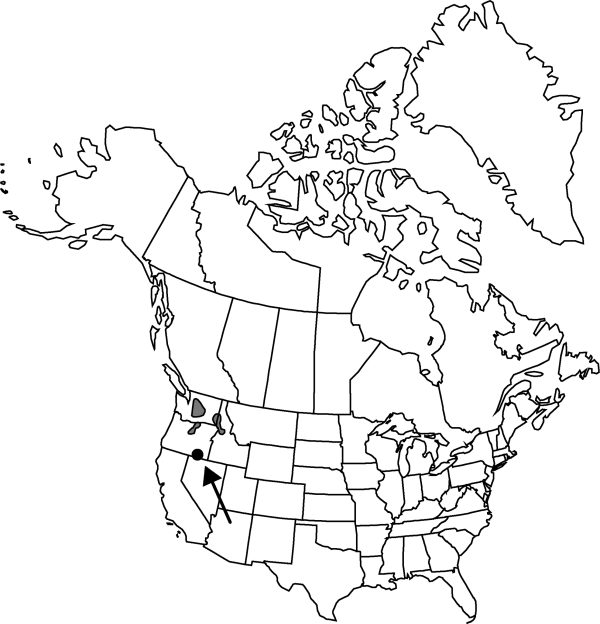Pediocactus nigrispinus
Succulenta (Netherlands) 71: 99. 1992.
Plants typically branched. Stems depressed-ovoid to elongate-ovoid, 5–30 × 5–15 cm; areoles oval, villous. Spines smooth, hard and rigid, distinguishable as radial and central; radial spines 10–30 per areole, spreading at right angles to tubercles, nearly straight, white to dull reddish brown, 8–20 mm; central spines 6–12 per areole, widely spreading or nearly erect, reddish brown to nearly black, rigid, straight or slightly curved, base yellow or cream, 15–35 mm, less than 1 mm diam. at base. Flowers 1–3.5 × 2.5–5 cm; scales and outer tepals of flower tube minutely toothed, laciniate, or entire and undulate; outer tepals with greenish brown midstripes, oblong-cuneate, 12–25 × 4.5–9 mm; inner tepals white, pink, magenta, yellow, or yellow-green, 19–27 × 5–10 mm. Fruits green tinged with red, drying reddish brown, short cylindric, 6–11 × 5–10 mm. Seeds gray to black, 2–3 × 1.5–2 mm, papillate but not rugose.
Phenology: Flowering spring.
Habitat: Great Basin desert scrub, sagebrush, grasslands, coniferous forests
Elevation: 400-2000 m
Distribution

Idaho, Oreg., Wash.
Discussion
No known morphologic character supports the taxonomic recognition of infraspecific taxa within Pediocactus nigrispinus. Characteristics used to distinguish the three described subspecies almost completely overlap. Pediocactus nigrispinus has been referred to P. simpsonii var. robustior (J. M. Coulter) L. D. Benson, which remains well within the range of variation for P. simpsonii. An unpublished study by J. M. Porter et al. of noncoding chloroplast DNA sequences shows P. simpsonii is less closely related to P. nigripsinus than to P. knowltonii, P. winkleri, and P. despainii.
Selected References
None.